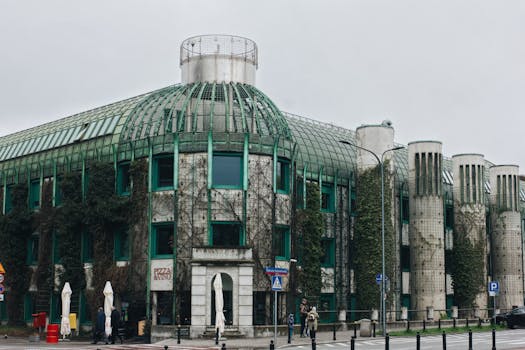
Sustainable Cities: How Europe is Shaping Eco-Friendly Lifestyles by 2025
Sustainable Cities are the future, and Sustainable Cities are at the forefront of this movement. As the world grapples with climate change, environmental degradation, and social inequality, European cities are taking bold steps to create a better future for their citizens. From green architecture to renewable energy, sustainable transportation, and eco-friendly lifestyles, Europe is shaping the way we live, work, and interact with our environment.
Introduction to Sustainable Cities
Sustainable cities are designed to minimize their environmental impact while improving the quality of life for their inhabitants. This concept encompasses a wide range of initiatives, including energy-efficient buildings, green spaces, and sustainable transportation systems. By adopting sustainable practices, cities can reduce their carbon footprint, mitigate the effects of climate change, and create healthier, more livable environments for their citizens.
Europe’s Sustainable City Initiatives
European cities are pioneers in sustainable development, with many initiatives aimed at reducing their environmental footprint. Some notable examples include:
- Copenhagen’s Carbon Neutral Goal: Copenhagen aims to become carbon neutral by 2025, with a focus on renewable energy, green transportation, and energy-efficient buildings.
- Amsterdam’s Green Roof Initiative: Amsterdam has implemented a green roof policy, requiring new buildings to incorporate green roofs to reduce energy consumption and improve air quality.
- Barcelona’s Superblock Program: Barcelona’s superblock program aims to reduce traffic congestion and promote sustainable transportation by converting city streets into pedestrian-friendly areas.
Sustainable Transportation in Europe
Sustainable transportation is a critical component of sustainable city development. European cities are investing heavily in eco-friendly transportation systems, including:
- Electric and Hybrid Vehicles: Many European cities are promoting the adoption of electric and hybrid vehicles, with incentives such as tax breaks, free parking, and access to restricted traffic zones.
- Cycling Infrastructure: Cities like Copenhagen and Amsterdam have invested in extensive cycling infrastructure, including bike lanes, bike-sharing systems, and cycling-friendly traffic signals.
- Public Transportation: Efficient public transportation systems, such as buses, trams, and metro lines, are being expanded and improved to reduce reliance on personal vehicles.
Eco-Friendly Lifestyles in Europe
European cities are also promoting eco-friendly lifestyles, encouraging citizens to adopt sustainable habits and reduce their environmental impact. Some initiatives include:
- Zero-Waste Goals: Cities like Stockholm and Vienna are striving to become zero-waste cities, with initiatives such as recycling programs, composting, and reduced packaging.
- Sustainable Food Systems: Many European cities are promoting sustainable food systems, including urban agriculture, community gardens, and locally sourced food markets.
- Eco-Friendly Housing: Cities are incorporating eco-friendly design and materials into new housing developments, reducing energy consumption and environmental impact.
Conclusion
Europe is at the forefront of sustainable city development, with a strong focus on eco-friendly lifestyles, sustainable transportation, and reducing environmental impact. As the world moves towards a more sustainable future, European cities are setting a powerful example for others to follow. By embracing sustainable practices and innovative technologies, we can create a better future for generations to come.




